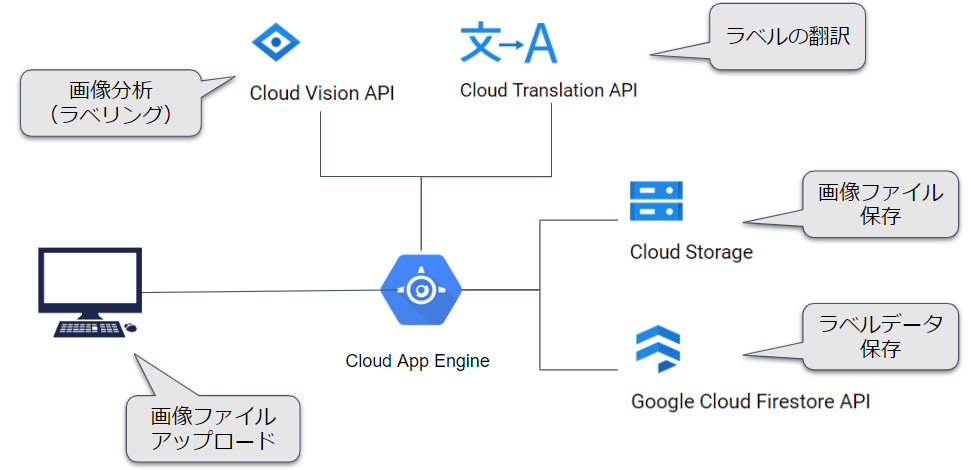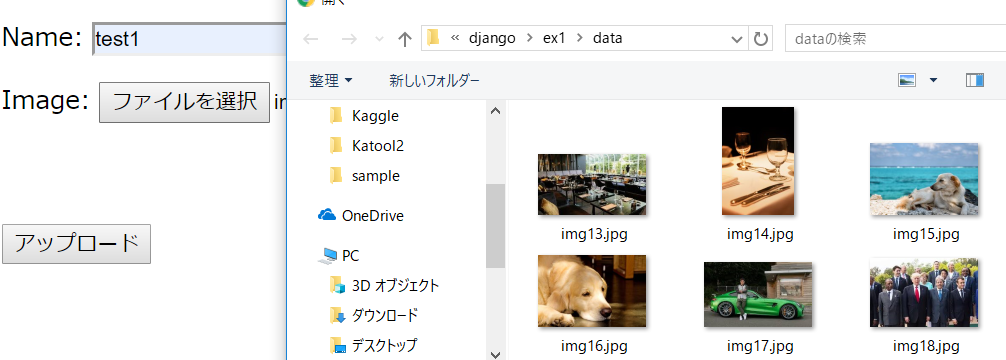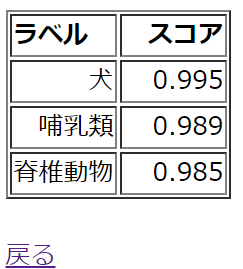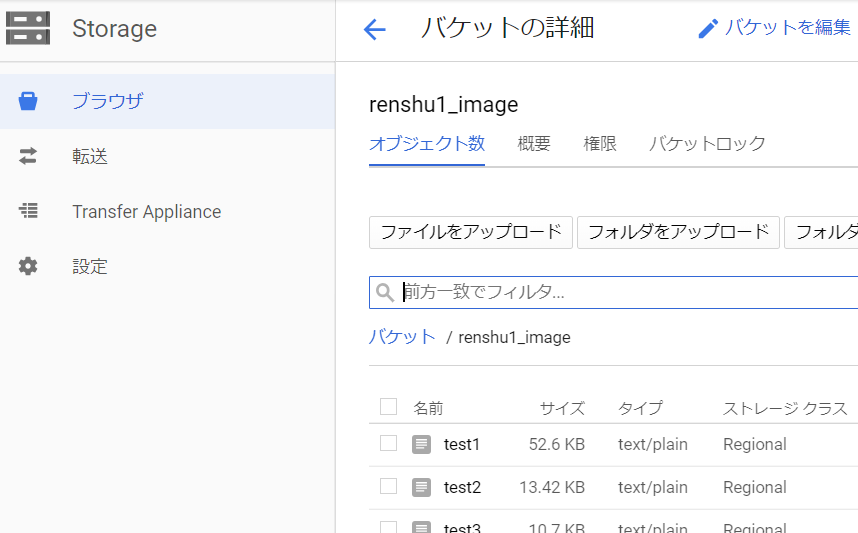目的
- Django アプリを GAE でデプロイする。
- Cloud Vision と Cloud Translate のクライアント・ライブラリー を使用する。
- Cloud Storage と Cloud Firestore にデータを保存する。
アプリケーションの全体像
コード
https://github.com/takeshikondo/djangogaeimage
動作確認
コードの抜粋
forms.py
from django import forms
class ImageForm2(forms.Form):
name = forms.CharField(
label='Name',
max_length=20,
required=True,
widget=forms.TextInput(),
)
image = forms.ImageField()
views.py
from django.http.response import HttpResponse
from django.shortcuts import render, redirect
from .forms import ImageForm2
def upload3(request):
import os
from google.cloud import storage
from google.cloud import vision
from google.cloud import translate
from google.cloud import firestore
# for local
#key_path = '.app1/key/xxx.json'
#os.environ["GOOGLE_APPLICATION_CREDENTIALS"] = key_path
#CLOUD_STORAGE_BUCKET = 'bucket_name'
# for deploy
CLOUD_STORAGE_BUCKET = os.environ['CLOUD_STORAGE_BUCKET']
path = 'gs://' + CLOUD_STORAGE_BUCKET + '/'
if request.method == 'POST':
form = ImageForm2(request.POST, request.FILES)
if form.is_valid():
blob_name = form.cleaned_data['name']
image = request.FILES['image']
#image = form.cleaned_data['image']
# Cloud Storage
client_storage = storage.Client()
bucket = client_storage.get_bucket(CLOUD_STORAGE_BUCKET)
blob = bucket.blob(blob_name)
blob.upload_from_string(
image.read(),
#content_type='image/jpeg',
)
# Vision API
vision_client = vision.ImageAnnotatorClient()
image = vision.types.Image()
image.source.image_uri = path + blob_name
response = vision_client.label_detection(image=image)
labels = response.label_annotations
# Cloud Firestore
firestore_client = firestore.Client()
doc_ref = firestore_client.collection('images').document(blob_name)
d1 = labels[0].description
s1 = labels[0].score
d2 = labels[1].description
s2 = labels[1].score
d3 = labels[2].description
s3 = labels[2].score
doc_ref.set({
'description1': d1,
'scale1': s1,
'description2': d2,
'scale2': s2,
'description3': d3,
'scale3': s3,
})
# Translate API
translate_client = translate.Client()
target = 'ja'
text1 = labels[0].description
text2 = labels[1].description
text3 = labels[2].description
translation = translate_client.translate(
text1,
target_language=target)
t1 = translation['translatedText']
translation = translate_client.translate(
text2,
target_language=target)
t2 = translation['translatedText']
translation = translate_client.translate(
text3,
target_language=target)
t3 = translation['translatedText']
d = {
'description1': t1,
'score1': '{:.3f}'.format(s1),
'description2': t2,
'score2': '{:.3f}'.format(s2),
'description3': t3,
'score3': '{:.3f}'.format(s3),
}
return render(request, 'app1/label.html', d)
else:
form = ImageForm2()
d = {
'form': form,
}
return render(request, 'app1/upload3.html', d)
requirements.txt
django
Pillow
google-api-core
google-auth
google-cloud-core
google-cloud-firestore
google-cloud-storage
google-cloud-translate
google-cloud-vision
google-resumable-media
googleapis-common-protos
grpcio
settings.py
ALLOWED_HOSTS = ['*']
app.yaml
runtime: python37
handlers:
# This configures Google App Engine to serve the files in the app's static
# directory.
- url: /static
static_dir: static/
# This handler routes all requests not caught above to your main app. It is
# required when static routes are defined, but can be omitted (along with
# the entire handlers section) when there are no static files defined.
- url: /.*
script: auto
env_variables:
CLOUD_STORAGE_BUCKET: bucket_name
main.py
from dj_project.wsgi import application
app = application



